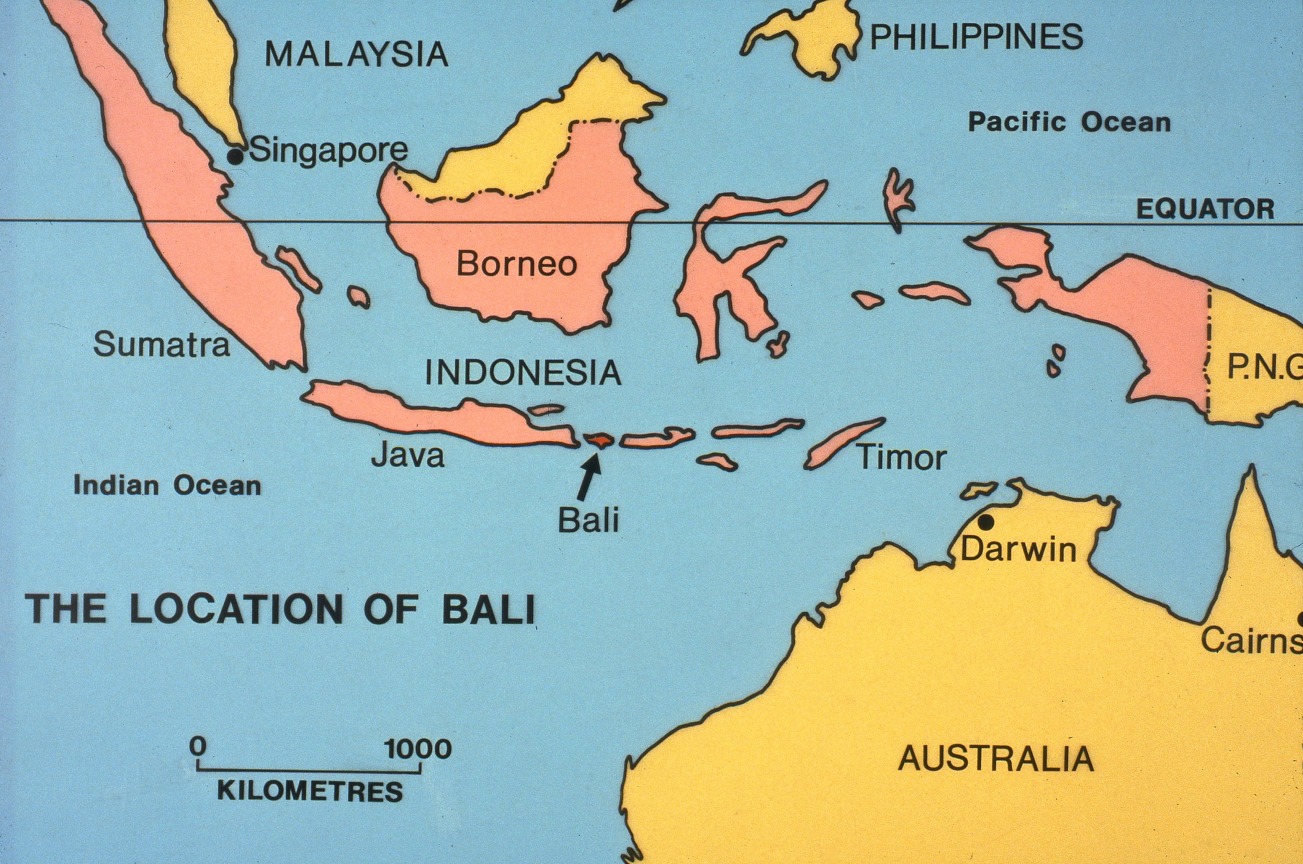Bali is a beautiful island located in the Indonesian archipelago. It’s a popular tourist destination, known for its white sand beaches, vibrant culture, and stunning scenery. But there’s one question that many visitors to Bali have: Is Bali south of the equator?
To answer this question, it’s important to understand the concept of the equator and how it divides the earth into two distinct hemispheres. In this blog post, we’ll break down the facts and figure out if Bali lies below the equator or not. Read on to find out!
Understanding the Equator
The equator is an imaginary line that divides the Earth into two hemispheres – the Northern Hemisphere and the Southern Hemisphere. It is the widest part of the Earth and is located at 0 degrees latitude. The equator is crucial for understanding the global positioning system and determining a location’s relationship to it.
In relation to Bali, the equator plays a significant role. Bali is a part of Indonesia, an archipelago country located in Southeast Asia. The equator passes just south of Indonesia, which means that Bali is indeed below the equator.
Being south of the equator has several implications for Bali’s climate and geography. It places the island in the Southern Hemisphere, which means that it experiences seasons opposite to those in the Northern Hemisphere. When it is summer in the Northern Hemisphere, it is winter in Bali, and vice versa. This affects the weather patterns, as well as the migration patterns of marine life and bird species.
Understanding the equator helps to give context to Bali’s unique position in the world. It contributes to the island’s diverse climate and ecological makeup. Whether you are a curious traveler or simply interested in expanding your geographical knowledge, understanding the equator and its relation to Bali can provide valuable insights into the island’s natural beauty and environmental characteristics.
Bali’s Location on the Map
Now that we understand the concept of the equator and its significance in relation to Bali, let’s take a closer look at Bali’s location on the map. Bali is part of the Indonesian archipelago, which is made up of thousands of islands. Located in Southeast Asia, Bali sits between the island of Java to the west and the island of Lombok to the east.
If you were to locate Bali on a world map, you would find it nestled just below the equator, in the southern hemisphere. Its precise coordinates are approximately 8 degrees latitude south and 115 degrees longitude east. These coordinates place Bali firmly below the equator, making it a part of the southern hemisphere.
Bali’s geographical location has several implications. Firstly, it means that the island enjoys a tropical climate, with warm temperatures year-round. The position below the equator also contributes to Bali’s stunning natural beauty, with its lush forests, towering volcanoes, and picturesque rice terraces.
In terms of its neighboring countries, Bali is situated close to Australia, which is also located in the southern hemisphere. This proximity has fostered strong cultural and economic ties between the two regions, making Bali a popular destination for Australian tourists.
Understanding Bali’s location on the map helps to paint a clearer picture of its position in relation to the equator and the world at large. It enhances our appreciation for the island’s unique geography and its significance in Southeast Asia.
Latitude and Longitude of Bali
To determine the exact location of Bali, we need to look at its latitude and longitude coordinates. Latitude measures a location’s distance north or south of the equator, while longitude measures its distance east or west of the prime meridian. Bali is situated at approximately 8 degrees latitude south and 115 degrees longitude east.
The latitude of 8 degrees south places Bali firmly below the equator, making it a part of the southern hemisphere. This has important implications for Bali’s climate and seasons, as mentioned earlier. Being south of the equator means that when it’s summer in the Northern Hemisphere, it’s winter in Bali, and vice versa. This creates a unique climate and weather patterns on the island.
The longitude of 115 degrees east indicates Bali’s position relative to the prime meridian, which runs through Greenwich, London. Being 115 degrees east, Bali is located quite far east in relation to the prime meridian. This has minimal impact on the island’s climate but is significant in terms of time zones. Bali falls within the UTC+8 time zone, which is known as Indonesian Central Time.
Understanding the latitude and longitude of Bali helps to pinpoint its exact location on the map. It enhances our understanding of the island’s geographical positioning and its relation to the equator and prime meridian.
Determining if Bali is Below the Equator
Now that we have a better understanding of the equator and Bali’s geographical location, let’s dive into determining whether Bali is actually below the equator or not. The equator passes just south of Indonesia, and Bali is part of this island nation. Therefore, it is safe to say that Bali is indeed below the equator.
If we look at the latitude coordinates of Bali, which is approximately 8 degrees south, we can clearly see that it falls below the equator. This means that Bali is situated in the Southern Hemisphere, experiencing seasons opposite to those in the Northern Hemisphere. So, when it’s winter in countries like the United States or Canada, Bali is basking in warm tropical weather.
Additionally, the longitude coordinates of Bali, approximately 115 degrees east, have no direct influence on determining if Bali is below the equator or not. Longitude measures a location’s distance east or west of the prime meridian and does not impact the equatorial line. However, it does play a role in establishing time zones, and Bali falls within the UTC+8 time zone.
So, there you have it! Bali is indeed below the equator, making it a part of the Southern Hemisphere. Understanding this helps us appreciate the unique climate, diverse flora and fauna, and the stunning natural beauty that Bali offers. Now, let’s explore the benefits of being below the equator in our next section!
Benefits of Being Below the Equator
Now that we know Bali is indeed below the equator, let’s explore the benefits of being in the Southern Hemisphere. One of the major advantages of Bali’s southern location is its tropical climate. As a result, the island experiences warm temperatures year-round, making it an ideal destination for those seeking a sunny escape from the colder Northern Hemisphere.
Whether you visit during the summer months or in the midst of winter, Bali’s pleasant weather will surely leave you feeling relaxed and rejuvenated.
Being below the equator also means that Bali is home to a unique array of flora and fauna. The island’s diverse ecosystem is a paradise for nature lovers, offering a rich variety of plant and animal species that thrive in the lush forests and pristine beaches.
From vibrant coral reefs teeming with colorful fish to endangered wildlife species found in Bali’s national parks, the natural beauty of this southern hemisphere gem is truly unparalleled.
In addition, Bali’s location in the Southern Hemisphere provides a different perspective on the changing seasons. While people in the Northern Hemisphere are bundled up in winter coats, Bali residents and visitors are enjoying sunny days on the beach. This means that no matter the time of year, you can always find a spot to relax and soak up the sun in Bali.
Overall, being below the equator offers numerous benefits for Bali. Its tropical climate, diverse ecosystem, and year-round warmth make it a sought-after destination for travelers looking to escape the colder Northern Hemisphere. So, if you’re dreaming of white sand beaches, crystal-clear waters, and a paradise getaway, look no further than Bali – the island that lies south of the equator.

